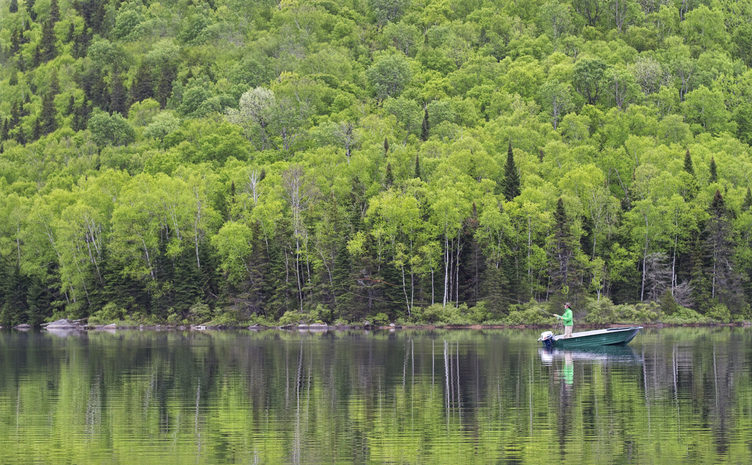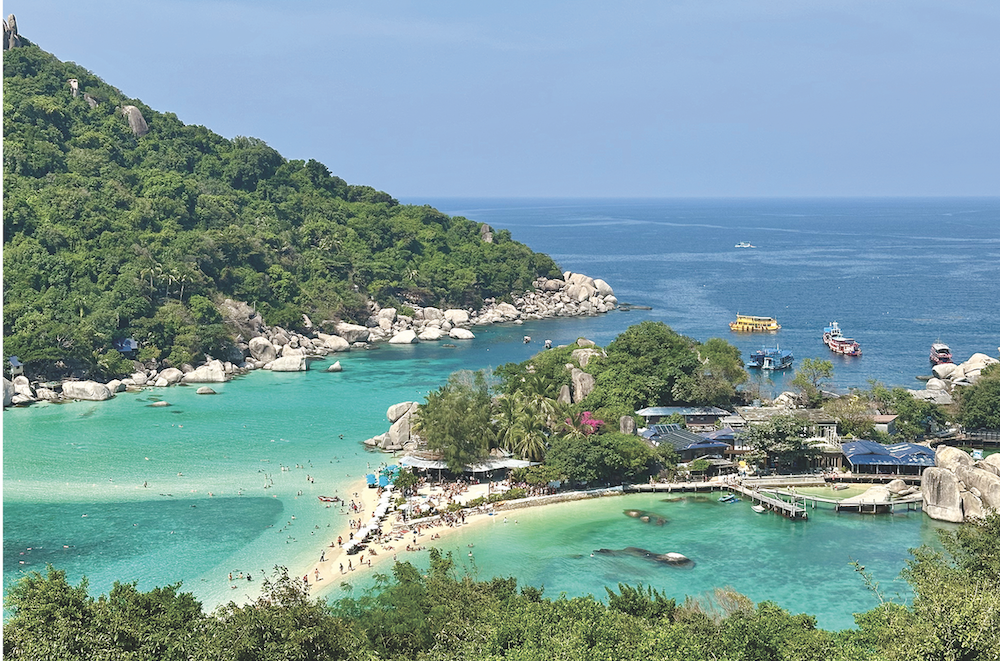By Sandra Binning and Ariane Côté, Université de Montréal
If you’re a fishing enthusiast, you may have already noticed abnormalities or parasites in the wild fish you catch. In fact, the fish we commonly find in our lakes, such as bass or trout, harbour several species of parasites. Although parasites are a natural part of ecosystems, their presence can potentially have serious consequences. But what are parasites? And what impact do these mysterious creatures have on our lakes?
Parasites are ubiquitous organisms that use another organism for food, shelter or reproduction. In doing so, they can alter the behaviour, growth, reproduction and chances of survival of the fish they infect. Parasites are often smaller than the organisms they infect. Think of a tick on a dog. Yet these tiny creatures play a major role in the balance of our lakes.
As a professor and master’s student in the Department of Biological Sciences at the Université de Montréal, we are working as part of the Canada Research Chair in the Eco-Evolution of Host-Parasite Interactions to understand how environmental changes can affect the way freshwater fish contract, manage and recover from parasitic infections. In this article we take a closer look at this small but fascinating world.
A larger-than-life role
Even though parasites play a key role in maintaining ecosystems, they are often wrongly considered to be a problem. For example, by reducing the reproduction or survival rates of certain species, parasites help to maintain reproductive balance by regulating the number of fish in a given population. This can prevent a single species from becoming dominant in a lake and avoid the ecological consequences that result from that.
Parasites are also a food source for various aquatic animals, such as cleaner fish, which feast on the small crustacean parasites on the skin of their clients. Parasites can also be used as indicators of the state of health of an environment.
Contrary to what one might think, an environment considered healthy in biological terms is generally an environment rich in different types of parasites. The same parasite may require several organisms (fish, molluscs, birds and mammals, etc.) to ensure its development. A diversity of parasites in fish therefore reflects the presence of a diversity of host species and interactions between them around the lake.
On the flip side, recently disturbed environments are often less rich in parasites. For example, a study found that there were fewer parasite species in sunfish in the St. Lawrence River in the most polluted areas than in the least polluted areas.
A question of balance
In general, a fish will not suffer any adverse effects from harbouring a parasite. However, things can start to deteriorate when that same parasite increases in number. For example, copepods are small crustaceans, some of which are parasitic and attach themselves to the gills and skin of fish. Parasitic copepods don’t cause problems in small numbers, but some species can damage the gills and cause breathing difficulties when they proliferate in large numbers on fish.
The example of copepods is a good illustration of the complex and fragile balance between a parasite and its host. This balance depends on a number of factors that can favour either the host or the parasite when there is an environmental imbalance. The number of parasites and their ability to infect a host are closely linked to environmental factors such as temperature and pollutant levels. Climate change and human activities are playing a worrying role in unbalancing these factors.
In other cases, a single parasite can cause serious problems. This is often the case with so-called invasive parasites, which have managed to introduce themselves into a new environment. For example, the parasite responsible for whirling disease has very high mortality rates of up to 90 per cent in salmon, trout and char in various lakes.
Eradicating this parasite is next to impossible. Their devastating impact has led to extraordinary measures being taken in various lakes in Western Canada, including draining Johnson Lake in Alberta.
We suspect that this parasite was introduced into Canada by humans. It can survive in fishes, water, boating equipment or sediments and may have been introduced by moving one of these elements from one contaminated lake to another. This underlines how important it is to know the characteristics of parasites in order to prevent and control the spread of diseases associated with them.
Where do we go from here?
Research into parasites has long focused on species that pose a threat to human health or are of economic importance. Arctic char is the fish species with the most known parasites in Northern Canada.
This does not mean that this fish does indeed have more parasites than others, only that they are more widely recorded because of the economic and cultural importance of Arctic char for the region. Unfortunately, this instrumental approach to research has resulted in considerable gaps in knowledge about the parasites of many freshwater fish in North America.
Many researchers now agree that parasites are understudied and underestimated, and that there is real need to think more about them. This new knowledge would enable us to better assess the state of our lakes and thus help protect those ecosystems, which are among the most threatened in the world.
A collective effort can also be made to prevent the introduction of new parasites into bodies of water. It is vital to
- not release aquarium fish (and their parasites) into streams and ponds;
- avoid transporting fish from one body of water to another;
- thoroughly clean and dry boating equipment before introducing it into a new environment.
These actions help to reduce the negative impact that humans can have on fish populations, as well as on sport and commercial fishing. So the next time you go fishing, think not only about the fish, but also about the parasites you will be catching with them!
This article is republished from The Conversation under a Creative Commons license. Read the original article.






